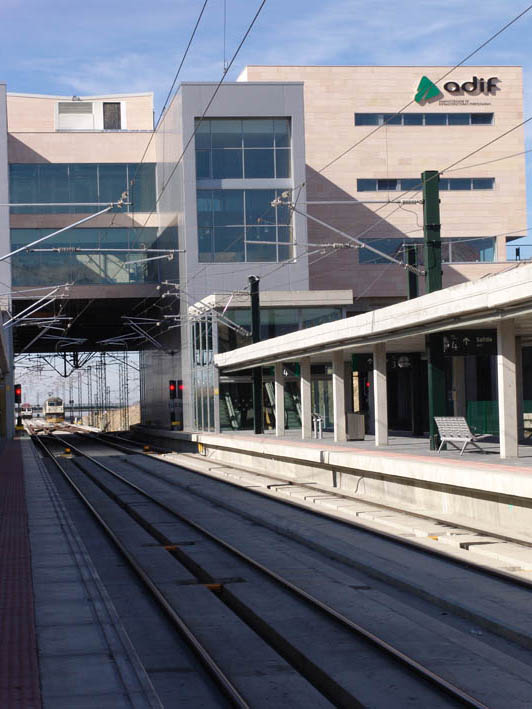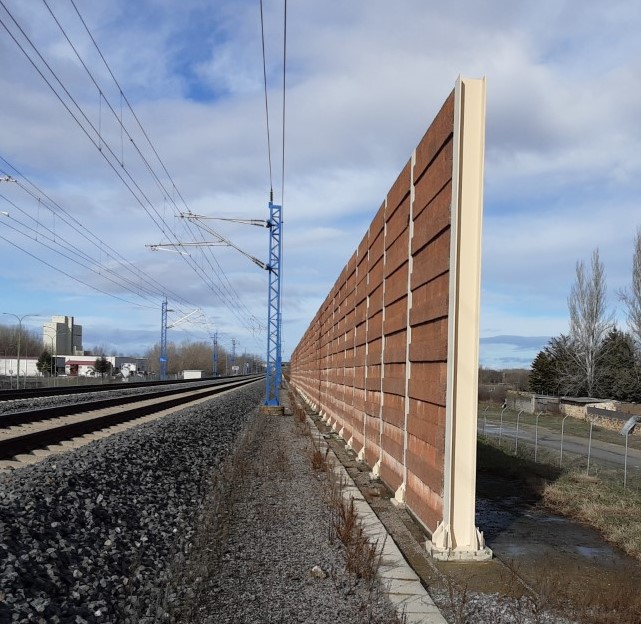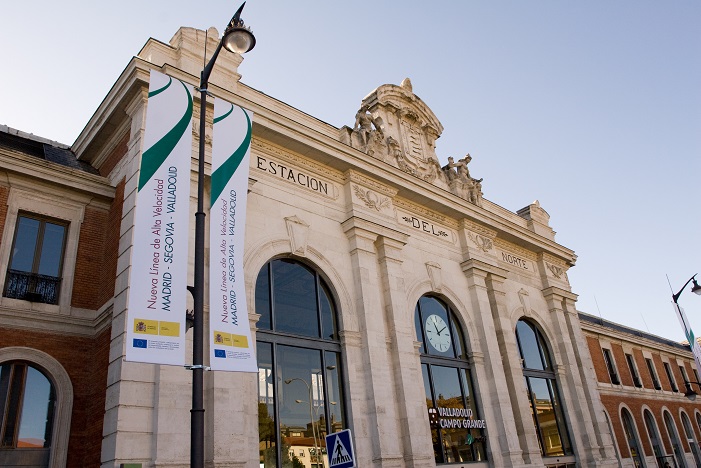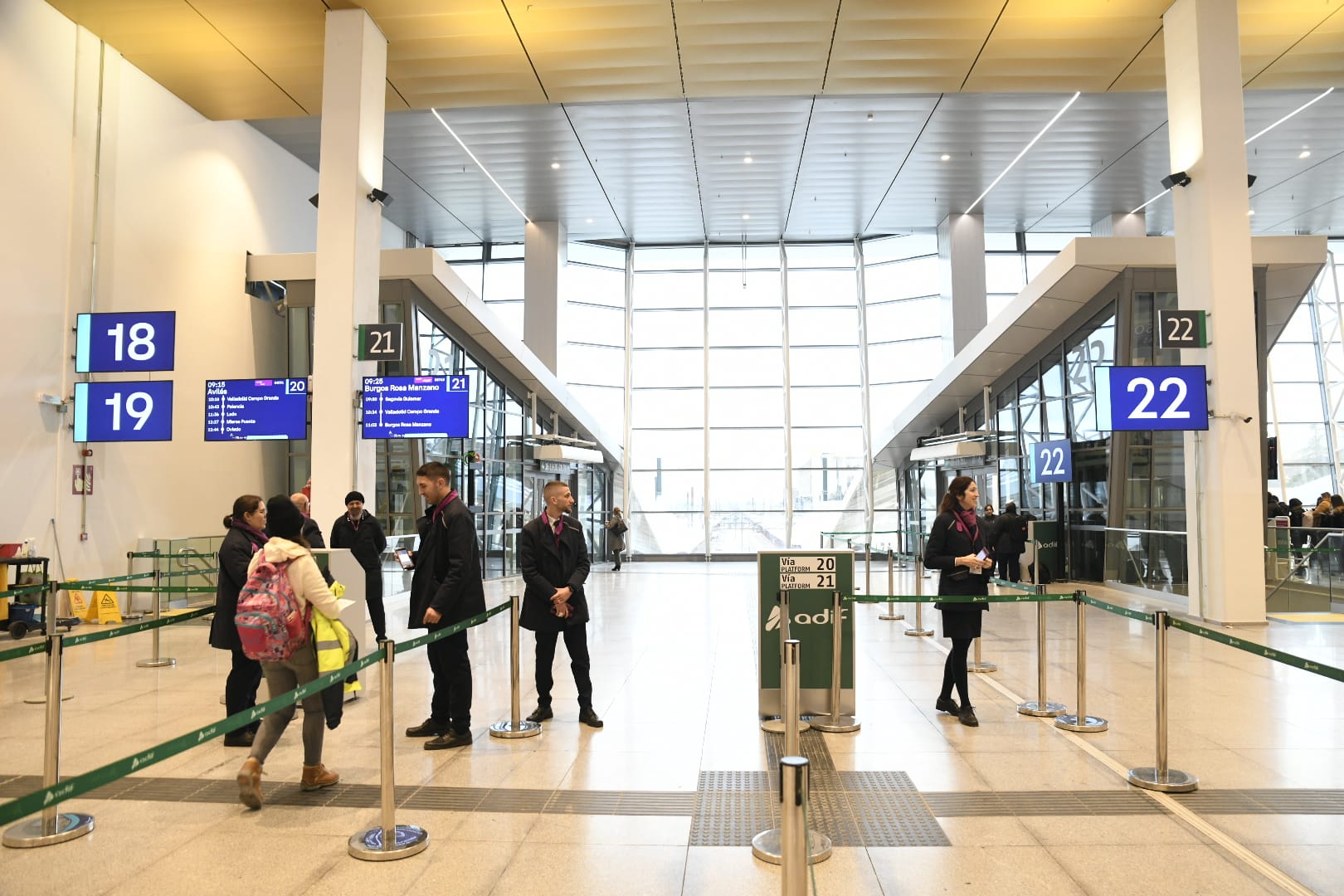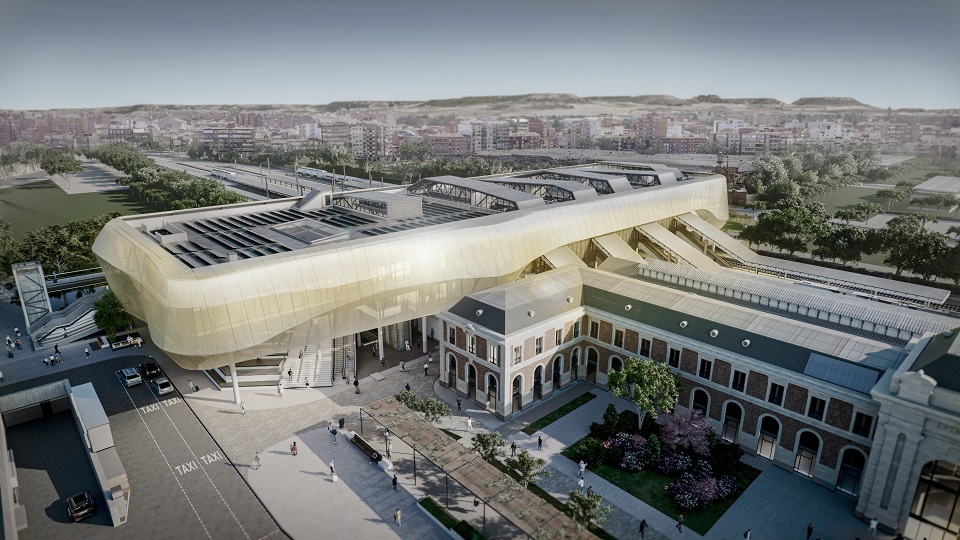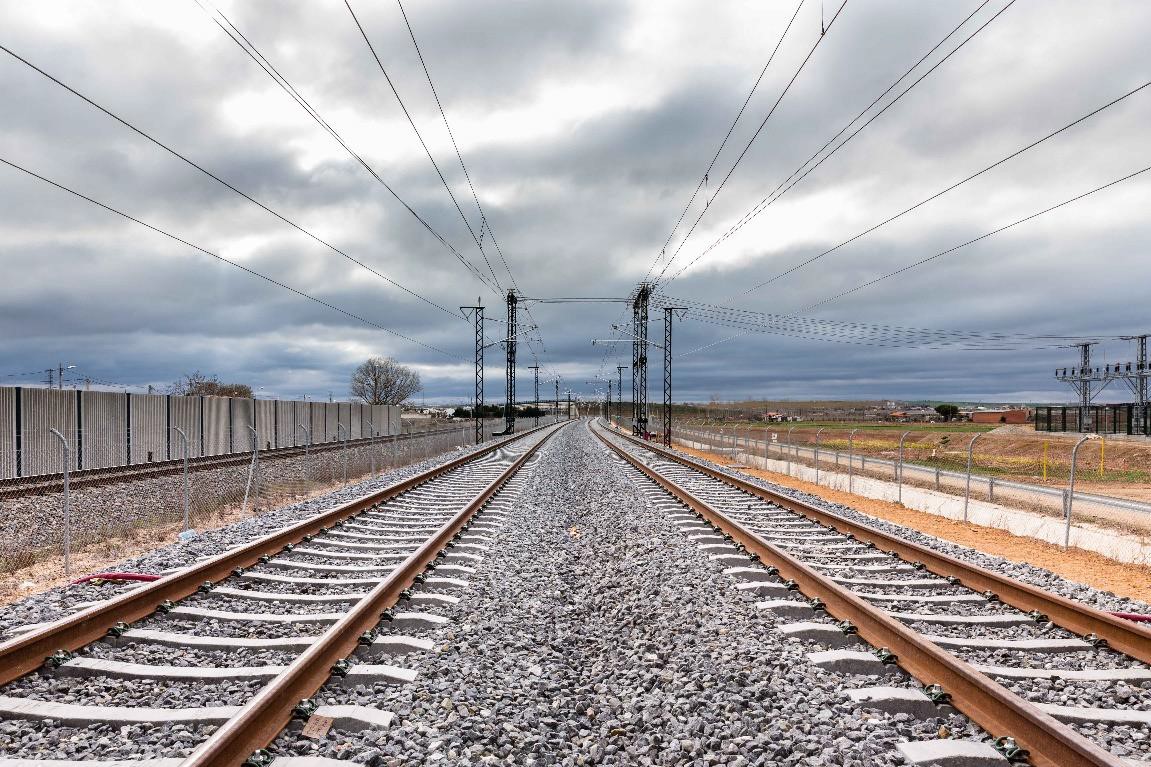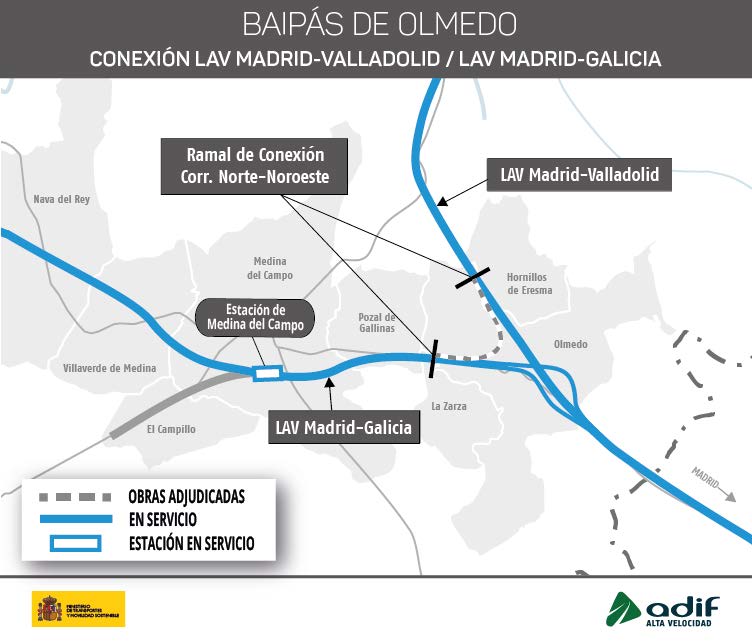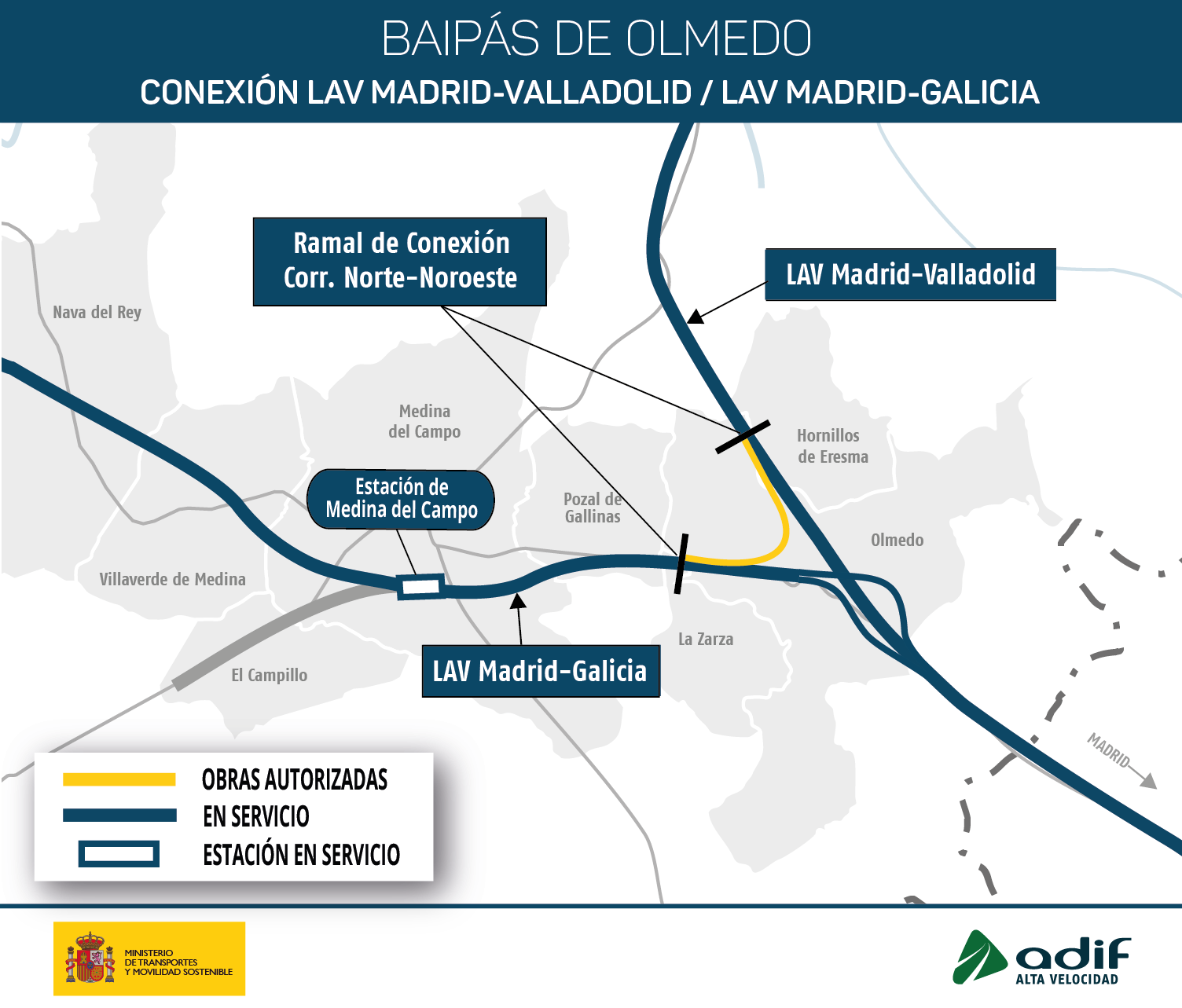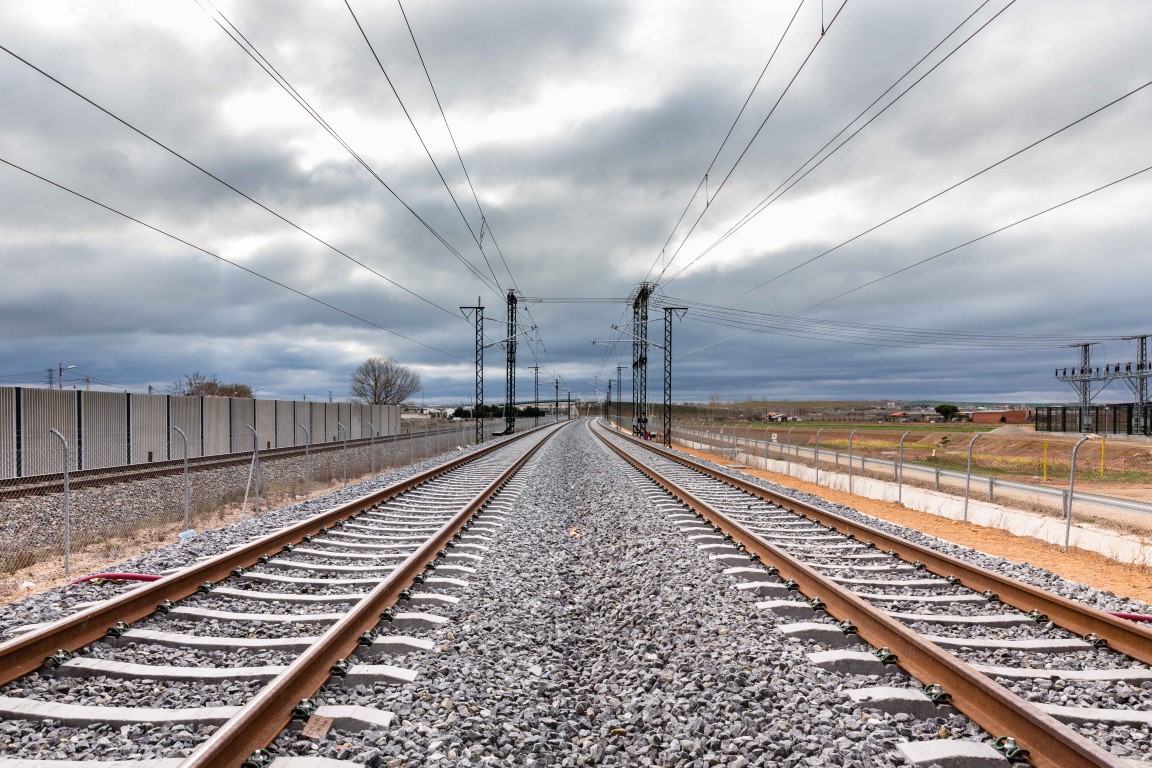Madrid - Valladolid Line
First section of the high-speed rail towards the north and north-west of Spain.
La reducción de tiempos de viaje y distancias por ferrocarril benefician a una amplia zona que representa más del 30% del los índices nacionales de población y superficie.
Es el primer tramo que entró en funcionamiento de los corredores norte y noroeste de alta velocidad. Por esta infraestructura circulan servicios ferroviarios entre Madrid y las Comunidades autónomas de Castilla y León, Galicia, Asturias, Cantabria y el País Vasco.
European Funding
"A way to make Europe"

Layout
This tunnel ends in the municipality of Soto del Real, where the route takes a northwesterly direction to reach the mountainous massif of the Sierra de Guadarrama, which is crossed by the Tunnel of the same name. The route continues to the southern part of the city of Segovia, where the Segovia-Guiomar station is located.
The Olmedo bypass is the first big fork in the line, bound for Medina del Campo, where it connectswith Salamanca and the Portuguese border. This is also where the line that will go to Galicia through Zamora starts.
After the Olmedo bypass, the route continues north to the city of Valladolid.
Environmental actions
One of Adif's main concerns is respect for the environment. For this reason, 6.7% of the budget for the construction of high-speed lines is allocated to guaranteeing their environmental integration, ensuring compliance with the Environmental Impact Statements and making improvements to the environment on a voluntary basis.
The HSL construction works complied with the requirements of the Environmental Impact Statement and the Natura 2000 Network, and permanent contacts were maintained with the Castile and Leon Regional Ministry of the Environment and with the Spanish Ornithological Society (SEO).
For the Madrid-Segovia-Valladolid HSL, environmental actions focused on the installation of:
- High ridges to enable steppe birds to take flight (Great Bustards)
- A constructive method devised and carried out to raise the central arches of the Arroyo del Valle Viaducte
- Landscape integration treatments: organic coconut hydroseeding, plantations and blankets.
- The number of trees (myrtle, ash, Scots pine, etc.) and shrubs (broom, blackthorn, etc.) has been considerably increased.
- Enclosures at the mouths of the drainage works
- Fauna escape hatches and ramps
- Integration of viaducts (wildlife crossing point)
- Fauna overpasses protected with topsoil, reed or wood fences
- Areas for the shelter and breeding of rabbits.
- Both to increase their population and to protect the Iberian imperial eagle, whose main food is the wild rabbit.
In addition to 5 false tunnels


